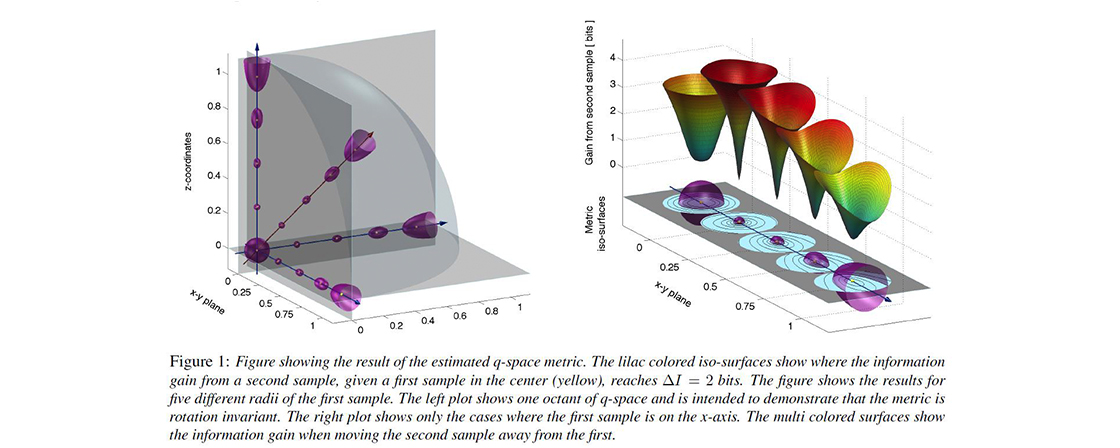The research can be summarized by the following four aims:
1. Designing and implementing a fast and accurate 3D dMRI simulator – To be able to correctly interpret the measurements attained by a given diffusion MR scan we will develop a dMRI simulator. The simulator will be able to handle complex compartment geometries and gradient waveforms. The simulator will be used to generate measurement dictionaries comprising a large number of combinations of compartment sizes and shapes and gradient sequences.
2. Finding diffusion measurement space metrics – The feature space that is sampled will be defined by the acquisition sequences used to attain each measurement. Using the simulator as a signal generator we will estimate the measurement metric for a given distribution of compartments using an information theoretic approach. This will
enable tuning of acquisition sequence sets to maximize efficiency for targeted tissue features.
3. Finding optimal sets of dMRI sequences – A continuous metric approximation can be obtained by matching a parametrized metric functional to the estimated diffusion feature space. To this end machine learning techniques, e.g deep learning, will be employed. We will then use the estimated continuous metric to find optimal sets of sequences by using an energy minimizing approach.
4. Estimating and describing micro-structural tissue features – An adequate space of possible compartment distributions can be of relatively low dimension. We will investigate the possibility to employ new and powerful learning strategies, e.g. deep learning, to find a mapping for an optimal adaptive subspace linear reconstruction that can be implemented by matrix inverse techniques.





